Early Verdict
Erato's Apollo7 tries something bold and lands it, but with quite a few wobbly steps. The hardware is surprisingly refined, but the connectivity issues could keep this from being one worth your money.
Pros
- +
Compact
- +
Stellar presentation
- +
Good sound
Cons
- -
Suffers frequent cut-outs
- -
Confusing controls
- -
Lacks compelling features of competitors
Why you can trust TechRadar
The best in-ear headphones are compact, fully-featured and sound wonderful. They're also all wired, leashed to your device by the long, usually twisted, cable that makes it all possible.
But there are wireless sets of in-ear headphones available, too. But most of those operate with a cable connecting the two buds together. So, what happens if you snip cables out of the picture entirely?
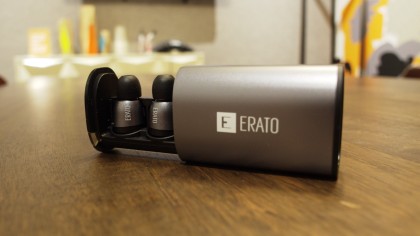
A new contender, the Erato Apollo7, has stepped up to the plate on Kickstarter with a completely wireless earphone system. The buds come packed away in a svelte charging case that's just a bit thicker than a box of Tic Tacs. Sliding up from the bottom reveals the two earbuds, which are snapped into their charging cradles.
First impression: awesome. Each earpiece is printed with which ear it belongs to, so popping them in is no different than your average, wired earphones. Getting them turned on is different, though simple enough. Just tap and hold the button that juts out near the circular charging port.
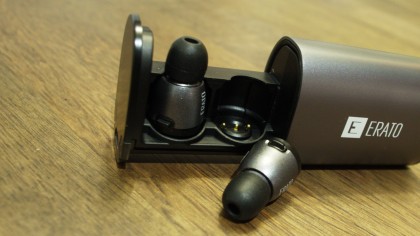
What sets the Apollo 7 apart from other wireless options, like the Beats Powerbeats 2 or the Optoma NuForce BE6, is that each earbud has to be turned on individually to trigger stereo sound. You can listen to one at a time if you'd like, say, while the other recharges in the case.
When pairing over Bluetooth with your preferred device (iOS and Android are supported out of the box,) all you have to do is make one of the buds discoverable. Once it's tethered, powering on the other will cause it to search for its earbud-dy and connect to it automatically.
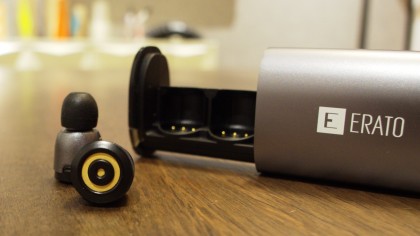
From there, listening to music and chatting on phone calls is a lot like using everyday headphones in the best way possible. The same button you use to power on the Apollo7 is also used to change songs and adjust volume. You can even queue up Google Now or Siri for some voice-based assistance. But executing these commands isn't as easy as it should be.
Each earbud is light and fairly discreet once popped in. I have to admit, it's a much better fit than I imagined it would be. And, inside of the charging case, it slides easily into a pocket without sticking out.
Cutting the cord isn't all sunshine
Going all-wireless is handy –when it works. But too often, things don't operate as intended. This is due to the fact that not only does the Erato Apollo7 need to stay connected to your phone, the two buds also need to stay in touch with each other to keep the whole experience afloat. This is a challenge that no manufacturers of truly wireless earbuds have nailed down, and Erato is no exception.
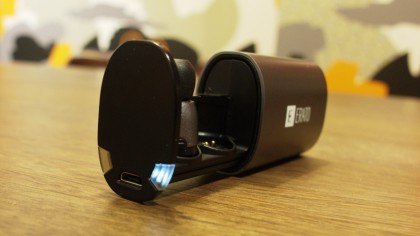
Connecting these buds is easy enough for those confident with Bluetooth tech, but sound cuts out without fail. On iOS, Android, and even connected to a Steam Link for fun, I encountered the same issue, which caused me to just settle with removing them after a minute of skip-laden listening. Rotating my head to give the buds a clear shot at the device didn't seem to help either. It just made me look dumb.
The Apollo7 also does this strange thing where it just stops playing at the end of each song, requiring me to hit play to keep the music flowing. I have faith that this will be fixed if Erato develops a firmware-delivering companion app when the earphones launch, but it's an alarming issue to miss.
While the hardware itself is refined, the strength of the Bluetooth tether leaves a lot to be desired, and in my experience, I encountered problem after problem.
Early verdict
If you've been keeping up with other truly wireless headphones, you know that there's a lot of potential here. Even after Erato's effort, the market is for the taking. But, there's enjoyment to be had here. It's just that each positive comes with a big negative.
Letting you use one of the Apollo7 buds independently is a thoughtful design feature, but in everyday use, managing the battery life for two separate earphones, in addition to that of your smartphone, can be a bummer.
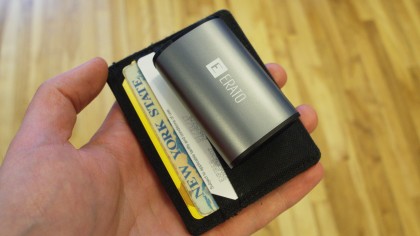
The controls built onto the Apollo7 allow for one-handed operation, but are confusing, and often, whipping my phone out to make the necessary adjustments felt easier.
So, what do we get for snipping the cable? Trouble, or at least that's what Erato's early efforts have shown thus far.
As I mentioned earlier, Erato has time to fix the nagging issues that I've encountered. And I hope it does, because it boasts a stellar look giving competitors, like the Bragi Dash, a run for their money, though it's not nearly as ambitious in terms of features. You'll find no biometrics or onboard storage built into these buds.
If you're interested in checking out the Erato Apollo7, you can back it on Kickstarter. The early bird special will nab you a pair at $249, while it will retail for $289 following a successful campaign. I'll be keeping a close eye to see if Erato plans to address the issues that I've encountered, which would definitely help make this set worthy of your consideration.
Cameron is a writer at The Verge, focused on reviews, deals coverage, and news. He wrote for magazines and websites such as The Verge, TechRadar, Practical Photoshop, Polygon, Eater and Al Bawaba.
What is a hands on review?
Hands on reviews' are a journalist's first impressions of a piece of kit based on spending some time with it. It may be just a few moments, or a few hours. The important thing is we have been able to play with it ourselves and can give you some sense of what it's like to use, even if it's only an embryonic view. For more information, see TechRadar's Reviews Guarantee.

